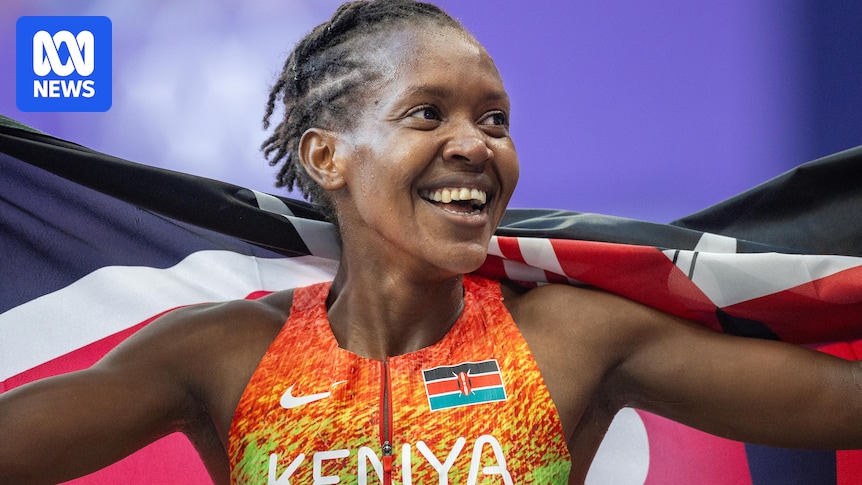
Faith Kipyegon, a three-time Olympic champion over 1,500 meters, is preparing to tackle one of the most revered barriers in athletics: the 4-minute mile. This ambitious attempt will take place at the Stade Charléty in Paris on June 26, 2025, and it promises to be a groundbreaking event in the world of sports.
While the 4-minute mile has been a milestone for male athletes since Roger Bannister first achieved it in 1954, no woman has yet broken this barrier. Kipyegon, who holds the current women’s mile record at 4:07.64, aims to defy history by shaving over seven seconds off her personal best.
The Challenge of the 4-Minute Mile
The 4-minute mile is a legendary benchmark in athletics, first conquered by Roger Bannister in 1954, followed closely by John Landy. Since then, over 1,700 men have achieved this feat. However, the fastest time recorded by a woman remains Kipyegon’s 4:07.64, set two years ago.
Breaking the 4-minute barrier would require Kipyegon to take 7.65 seconds off her current record, a daunting task. For context, Usain Bolt’s record-breaking 100m sprint in 2009 improved the world record by only 0.11 seconds, or 1.13%.
Technological Innovations in Kipyegon’s Arsenal
Nike, known for pushing the boundaries of athletic performance, is backing Kipyegon’s attempt with cutting-edge technology. The company has developed a special skin suit with 3D-printed “aeronodes” to reduce drag, a technique borrowed from high-speed sports like luge.
Kipyegon will also wear custom spikes weighing just 85 grams, equipped with a carbon plate and titanium pins for enhanced energy return. These innovations echo the technological advancements seen in marathon running, where specialized shoes have led to record-breaking performances.
Lessons from Eliud Kipchoge’s Marathon Success
Kipyegon draws inspiration from her training partner, Eliud Kipchoge, who famously broke the 2-hour marathon barrier in 2019. Although Kipchoge’s record was not officially recognized due to the extensive support he received, it demonstrated the potential of combining human endurance with technological assistance.
“I’m a three-time Olympic champion. I’ve achieved World Championship titles. I thought, What else? Why not dream outside the box?” — Faith Kipyegon
Implications of a Successful Attempt
If Kipyegon succeeds, it would not only mark a monumental achievement in women’s athletics but also inspire future generations. She has expressed a desire to be a role model for her seven-year-old daughter and for women worldwide, encouraging them to push boundaries and dream big.
The mile is not a common event in major competitions, with the 1,500m being the preferred distance. However, Kipyegon’s attempt could reignite interest in the mile, highlighting the potential for women to achieve what was once deemed impossible.
Looking Ahead
As the date approaches, the world will watch with anticipation to see if Kipyegon can etch her name in the annals of athletic history. Regardless of the outcome, her attempt underscores the evolving nature of sports, where technology and human spirit converge to redefine possibilities.
Should Kipyegon succeed, it would not only cement her legacy as one of the greatest middle-distance runners but also challenge the next generation to dream bigger and aim higher.







